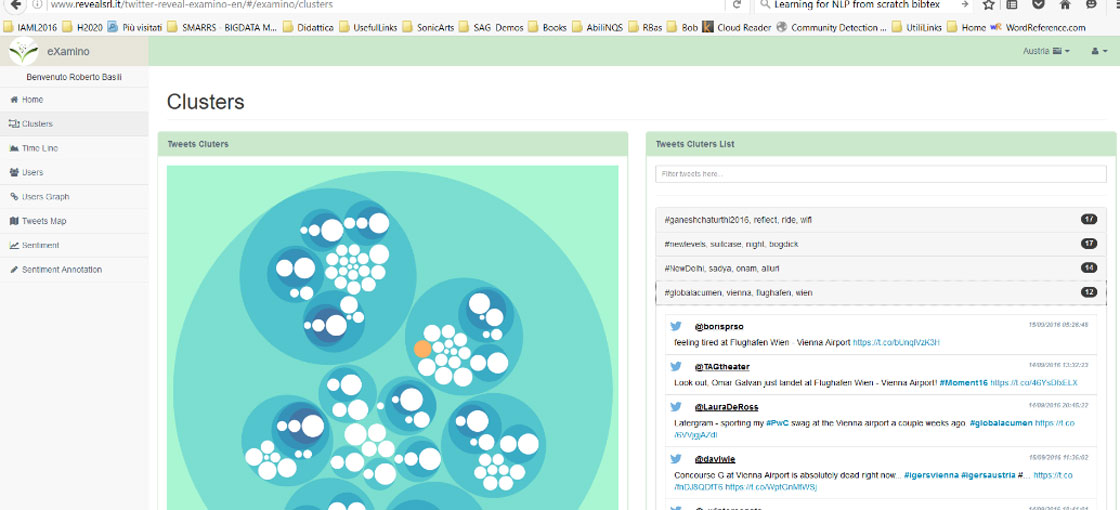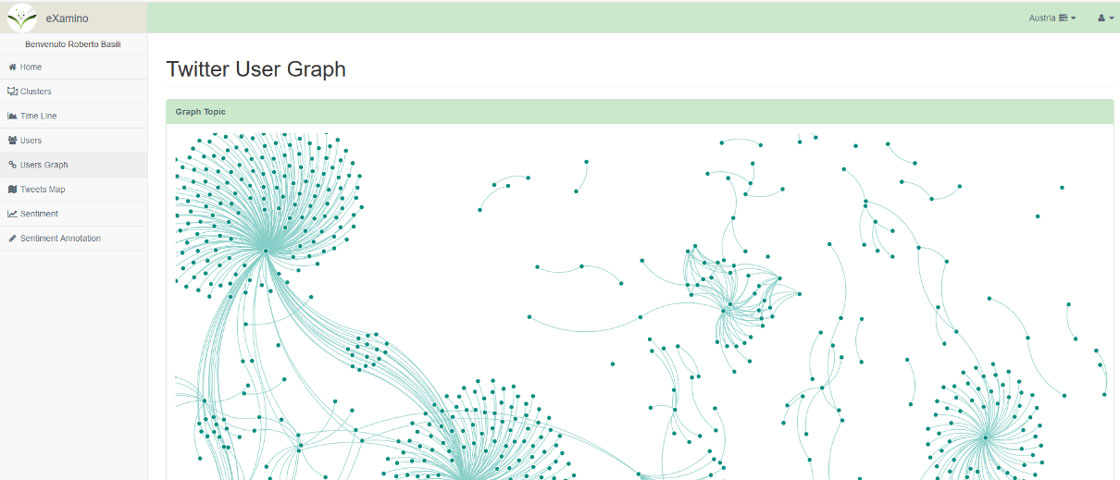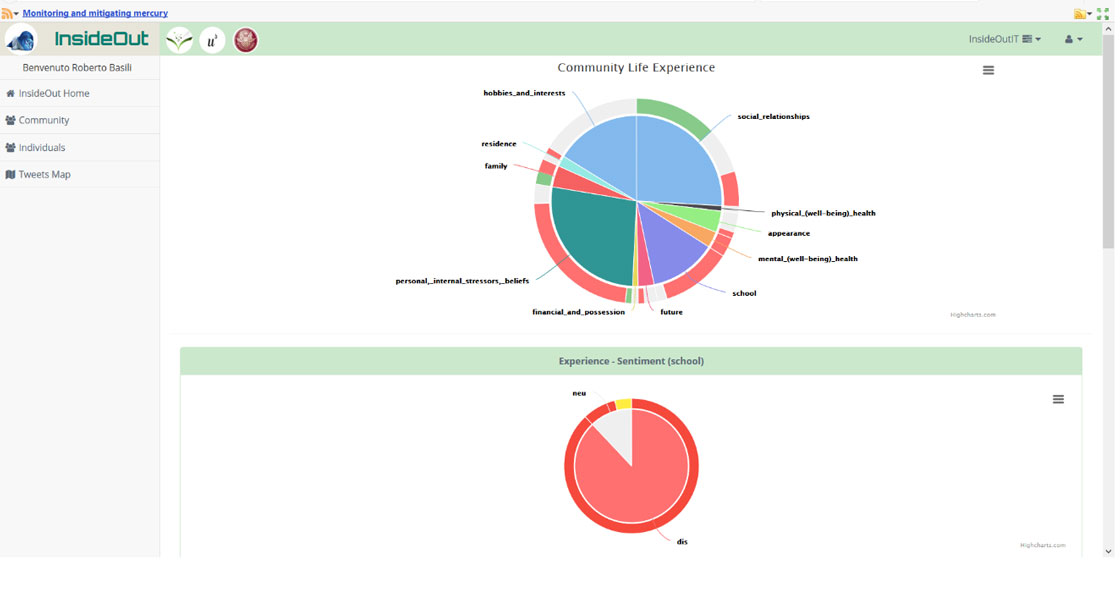AI for Mental Distress Monitoring
TWITTER • MENTAL HEALTH
InsideOut is a project on how to use the Web in the treatment of mental discomfort issues affecting the communities of Web teenagers.
InsideOut has been carried out as an international research cooperation among the Department of Child Psychiatry of the University Psychiatrische Dienste Bern (UPD), the Faculty of Medicine of the University of Rome “La Sapienza”, the CNR of Rome and the University of Dusseldorf.
The project is a first in-depth examination of how an Artificial Intelligence platform, acting on a Web microblog, Twitter, allows monitoring, discovery and expert reporting in the medical field (in two languages, Italian and English). The InsideOut project has been presented in various scientific contexts and conferences (EPA 2018, and Clic-It 2017).
Technological Objective: Inside out project monitoring social media for modelling mental distress in adolescents
Reference User: FETZ Bern University Hospital of Child and Adolescent Psychiatry and Psychotherapy, University of Bern
Project timeline: January – December 2017
Technological Partner: Univ. La Sapienza
Artificial Intelligence platform, acting on Twitter
The objective of InsideOut is the recognition of phenomena related to mental health and the possible presence of different forms of distress by young people.
The analysis of adolescents’ behavior and relationships on Social Media has been realized through the development of a service for the automated analysis of young people’s language productions. The investigation capacity and scale enabled by the InsideOut system was made possible by the adoption of advanced Natural Language Processing (NLP) tools, able to automate the linguistic analysis and the exploitation of such data, according to Machine Learning algorithms able to understand, organize and distill medical-psychiatric evidence from all information flows.
The analysis of InsideOut is carried out in parallel for both Italian and English on Twitter, i.e.
Microposts characterized by:
- Easily accessible public content.
- User communities that are particularly diversified in terms of methods and purposes of use (e.g. professionals vs. enthusiasts), cultural and informative interests, and socio-demographic factors (geographical location, census, gender or age).
- Mechanisms of interaction rich and of great psychological interest.
In figure 2 below, The InsideOut front-end enables the thematic clustering of tweets (hierarchical clustering expressed on the left by concentric circles) related to a specific group of users or some hashtag.

In figure 2 below, the network connectivity structure that characterizes a community is displayed: the structure that expands from some of the most influential subjects is useful to determine the communities, their dynamics and also the roles of individual users within them.

Fig. 2: the graph of the users in InsideOut: emerging communities can be observed by cross-referencing the interactions between users (e.g. the retweet mechanism) and the issues they deal with (clusters).
Finally, tweet sentiment can be used to refer to emotional nuances and provide statistical community reports based on the designed psychological model.

Fig 3: the browser of the mental model description of the user community in InsideOut
Psychological Profiling Widely Applicable
InsideOut research has demonstrated the robustness of the platform for community management and user profiling of Twitter over time. This model has wide applicability also to social groups other than adolescents. Psychological profiling has value in all mechanisms of sociological modeling of users (potential and current); the multidimensional approach tested with the psychologists/psychiatrists of the three universities involved is flexible and has wide applications in other fields, from marketing to cybersecurity.


